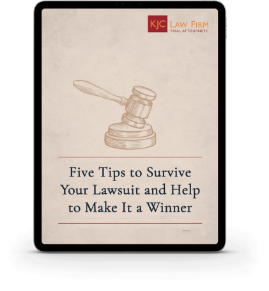Many people’s routines are being disrupted due to the COVID-19 pandemic. Gyms are still closed, work is being done from home, and the weather keeps getting colder. When it comes to physical and mental health, nutrition and physical activity are key players. Not only does a good diet and being active promote a healthy lifestyle, but also prevents disease.
Physical activity, movement, and exercise are extremely important to maintain during the coronavirus pandemic. An inactive lifestyle is associated with higher risks for chronic disease and decreased immune health. With that in mind, below are benefits of exercise, how to think about exercising, how much you should be doing, equipment, and more.
Benefits
Individuals who are physically active are scientifically proven to live longer and have decreased chances of heart disease. Being inactive is a big risk factor to a weak immune system and disease. Here are some benefits of exercise:
- Immune support: Exercising regularly helps your immune system function properly.
- Stress and anxiety relief: It is hard not to feel stressed or anxious, especially during the pandemic. Exercising releases chemicals in your brain, such as endorphins and serotonin which improve your mood, decrease depression, and delay onset dementia.
- Weight management: Exercise is paired with balanced healthy diets to help with weight management. Excess weight is also a factor with higher health risks.
- Bone, muscles, balance, and flexibility: Exercise improves muscle and bone strength as well as increasing flexibility and balance. This is important for all ages because it decreases risk of injury. For, children it sets healthy habits for the future.
- For children, exercise can decrease behavioral issues such as ADHD and help with concentration during school or at-home school!
According to the U.S. Department of Health, adults should get at least 150 minutes of exercise a week. It is hard to find time in a busy schedule to exercise but doing 20 to 45 minutes three times a week is plenty. Listen to your body and find what your limits are. Do not over work yourself, especially during the pandemic. Signs of extreme soreness, pain, or fatigue are signs that you are exercising too much.
Create an Exercise Routine
Make a simple routine. This way you can accomplish your goals and enjoy exercising! Older adults should combine moderate aerobic activity with balance and muscle strengthening exercises. To mirror your gym workout, use household items instead of weights such as water bottles, a bowling ball, or canned food
Stay Motivated
Without equipment or those group classes, exercising at home can be tough. It doesn’t mean you cant interact with others! Talk your workout buddies or trainer via Zoom, Facetime, or the phone. Get the kids or your partner involved. Mix in other activities such as gardening, cleaning, and walking as these count as aerobic exercises too. Switch up your routine with new moves, music from apps like Spotify and Sound Cloud, or putting on your favorite TV show on while exercising.
How to Be Physically Active at Home
Focus on Weaknesses
Go through and assess which areas you excel at, which you are moderate at, and which ones you need the most work on. Start working on the area you need the most work on and progressively moving to areas you already have mastered. This doesn’t mean to ignore the rest when you are focusing on a particular area but have a specific motivation in mind.
- Aerobic capacity and endurance: Also known as cardio! This is the skill of your heart and lungs to get oxygen to your muscles for their function. Exercises like running, cycling, swimming, and jumping jacks are great examples.
- Strength and coordination: This is the amount of force a muscle can use against resistance. The resistance can come from external weights or body weight. Your core muscles play a key role in these movements. Examples include strength training, squats, lunges, and abdominal exercises.
- Flexibility, Mobility, and Stability: Flexibility is the ability to move through your full active and passive range of motion. Mobility is moving your joints and muscles in an active matter. Stability is maintaining control of a position and movement through your muscles and joints. Exercises like yoga and stretching are great ways to accomplish this!
Split your body
There are different ways to split up your workout or program. Try to focus on each given targeted workout and try to balance them throughout the week.
- Lower body: Waist down. Thighs, waist, calves, and feet.
- Upper body: Waist up. Abs, back muscles, shoulders, and chest.
- Full-body: The whole thing! This is trying to use your full body to perform movements.
Exercises to do at home
Start by doing each exercise for 45 seconds with a 30 second rest following. Build time weekly!
- Forearm plank
- Bodyweight Squat
- High-knees
- Jumping Jacks
- Push ups
- Jump roping






